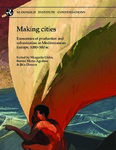Large and complex settlements appeared across the north Mediterranean during the period 1000–500 bc, from the Aegean basin to Iberia, as well as north of the Alps. The region also became considerably more interconnected. Urban life and networks fostered new consumption practices, requiring different economic and social structures to sustain them. This book considers the emergence of cities in Mediterranean Europe, with a focus on the economy. What was distinctive about urban lifeways across the Mediterranean? How did different economic activities interact, and how did they transform power hierarchies? How was urbanism sustained by economic structures, social relations and mobility? The authors bring to the debate recently excavated sites and regions that may be unfamiliar to wider (especially Anglophone) scholarship, alongside fresh reappraisals of well-known cities. The variety of urban life, economy and local dynamics prompts us to reconsider ancient urbanism through a comparative perspective.Identifiers
This record's DOI: https://doi.org/10.17863/CAM.76133Rights
Attribution-NonCommercial-NoDerivatives 4.0 International (CC BY-NC-ND 4.0)Licence URL: https://creativecommons.org/licenses/by-nc-nd/4.0/
Publication Date
2021-09-28ISBN
978-1-913344-06-1Publisher
McDonald Institute for Archaeological ResearchType
Book










 Stumble It!
Stumble It!

No comments:
Post a Comment